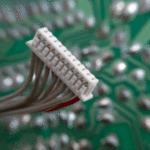Five Things to Know About OFC 2015
The annual Optical Fiber Communications Conference continues to grow, and ProLab’s Giacomo Losio reports on the top five technologies that everyone was talking about.
 OFC 2015 was a very busy show. Sometimes you go to a two-day event and think it could have been condensed into one, but in OFC’s case it could have been three and you still would have needed a fourth. Here are a few hot topics from the 2015 exhibition.
OFC 2015 was a very busy show. Sometimes you go to a two-day event and think it could have been condensed into one, but in OFC’s case it could have been three and you still would have needed a fourth. Here are a few hot topics from the 2015 exhibition.
- Compatible Transceivers
Several companies are openly promoting the benefits of OEM-compatible transceivers (same quality but less expensive) and got lots of attention from people attending the exhibition. Compatibles are officially recognized as a viable alternative to OEM devices and a smart way of dealing with tight budgets: They are no longer considered a gamble or a lower class of product.
- 25Gb/s and 100Gb/s
25Gb/s and 100Gb/s are coming to data centers sooner than expected. Many companies presented live demos of SFP28, CFP4, and QSFP28 devices in different reaches, both transceiver and cables, both copper and active optical. QSFP28, in particular, will reach relevant volumes as data centers migrate to 100G.
We also saw new modulation formats (PAM-4, for example) emerging as a way to provide 100G on a single wavelength, a very important step toward 400Gb/s devices. Optical innovation combined with the advent of Flex Ethernet (a way to reconcile Ethernet rate progression by large increments with the need for flexibility and finer granularity) will soon have a real impact on the features of the next generation of data center hardware as well as optical transport gears. Flex Ethernet concepts have been around for a while, but now that OIF and ITU are driving the standardization, it will see high adoption rates.
- Optical networks
Optical networks grow more essential every day for every exchange of information. For example, they have become an indispensable component of mobile transmission systems (backhaul and fronthaul) and are the key technology that enables the tremendous growth of mobile data. Some fronthaul peculiarities (high bandwidth is needed to optimize fiber infrastructure) might give WDM PON the long-awaited opportunity to reach mass deployment. Mobile, video, and inter-data center interconnections will drive the growth of metro networks and force these to migrate to 100Gb/s.
- Silicon Photonics
Silicon photonics continues its quest toward a future where chips will have optical high-speed interfaces rather than electrical ones. Several companies, most notably IBM, have presented ideas that head in that direction, while Microsoft and others announced an initiative (COBO) that aims at standardizing optical engines that can be embedded in networking gears to address faceplate density and power constraints. The assumption is that the life cycle of the platforms is around three years, and at that point they will be replaced with the best solution that the technology can offer. This can be considered “phase two” of the silicon photonics revolution (phase one was the transceiver, phase three will be optical interfaces embedded in the chips).
- Manufacturing Processes
There is a pressing need for better manufacturing processes that could reduce transceiver costs, particularly the packaging: For example, a cheap silicon photonics device packaged in an hermetic gold box becomes an expensive device. The industry needs to move towards standardized and automated processes. One important trend is the emergence of foundries that offer silicon photonics services; this could create a “fabless” model that will shorten optical hardware design cycles and allow new and innovative start-ups to demonstrate their ideas.
Giacomo Losio is head of technology at ProLabs.





